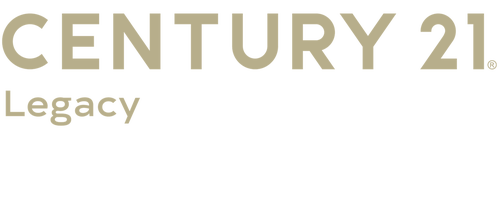Nestled in the heart of the Great Smoky Mountains, Gatlinburg, Tennessee, is a destination that pulses with seasonal energy. From the vibrant fall foliage that draws millions of visitors to the quieter winter months when snow dusts the mountain peaks, this charming mountain town experiences dramatic shifts in tourism throughout the year. For prospective property buyers, understanding these seasonal patterns is crucial when deciding between purchasing a personal retreat or investing in a vacation rental property.
Understanding Gatlinburg’s Seasonal Rhythm
Gatlinburg’s tourism calendar follows a predictable yet dramatic pattern. Peak season typically runs from June through August when families flock to the area for summer vacations, and again from late September through November when the fall colors paint the mountains in stunning hues of red, orange, and gold. These peak periods can see occupancy rates for vacation rentals soar above 80%, with nightly rates sometimes doubling or even tripling compared to off-season pricing.
Winter brings a different kind of appeal. While January and February tend to be slower months, the holiday season from Thanksgiving through New Year’s draws substantial crowds eager to experience Gatlinburg’s famous winter lights and festive atmosphere. Spring represents the shoulder season, offering moderate visitor numbers and pleasant weather as wildflowers begin to bloom and hiking trails become accessible again.
This cyclical nature of demand creates both opportunities and challenges depending on your investment goals and how you plan to use the property.
Buying for Personal Use: Embracing the Seasons
If you’re considering purchasing a Gatlinburg home primarily for personal use, seasonal demand patterns work in your favor in several ways. During off-peak periods, you’ll enjoy a quieter, more authentic mountain experience. The town’s restaurants, shops, and attractions are less crowded, and you can explore the Great Smoky Mountains National Park trails without the summer throngs.
Personal-use buyers also benefit from more flexible scheduling. You’re not beholden to peak-season booking calendars or worried about maximizing occupancy rates. Want to spend a cozy February week by the fireplace? You can do so without calculating the opportunity cost of lost rental income. Prefer to avoid the October leaf-peeper crowds? Simply plan your visits around these busy periods.
However, there are considerations to keep in mind. Properties in Gatlinburg typically cost more than comparable homes in non-tourist areas, partially due to the rental income potential that drives up property values. You’ll be paying for that potential even if you never tap into it. Additionally, if your home sits vacant for extended periods, you’ll still face ongoing expenses including property taxes, insurance, HOA fees, and maintenance costs without any offsetting rental revenue.
Many personal-use buyers find a hybrid approach appealing: using the property themselves during their favorite seasons while renting it out during other periods. This strategy can help offset ownership costs while still providing flexibility for personal enjoyment. However, this leads us into vacation rental territory, where seasonal demand becomes even more critical.
The Vacation Rental Investment Equation
For investors focused on vacation rental income, understanding and leveraging seasonal demand is essential to profitability. A well-managed Gatlinburg vacation rental can generate substantial returns, but success requires strategic planning around those peak and valley periods.
During high season, savvy investors can command premium rates. A three-bedroom cabin that might rent for $150-$200 per night in February could easily fetch $350-$500 or more during peak fall foliage or summer vacation weeks. Annual gross revenues for successful vacation rentals in desirable Gatlinburg locations often range from $40,000 to well over $100,000, depending on property size, amenities, location, and management quality.
The challenge lies in navigating the off-season valleys. Even the most desirable properties may experience occupancy rates below 30% during January and February. This creates a cash flow dynamic where you must earn enough during busy months to cover expenses during slow periods. Smart investors build this reality into their financial models, ensuring their peak-season profits can sustain the property year-round.
Location becomes paramount for rental investors. Properties with features that appeal across seasons—hot tubs for winter visits, mountain views for fall leaf season, proximity to attractions for summer families, and game rooms for entertainment during any weather—tend to maintain more consistent occupancy than one-season wonders.
Financial Considerations: Running the Numbers
The financial mathematics differ dramatically between personal use and rental investment. Personal-use buyers should calculate total annual costs including mortgage, taxes, insurance, utilities, maintenance, and HOA fees, then divide by expected usage nights. This gives you a “cost per night” that you can compare against vacation rental alternatives. Many buyers find that even at $500-$1,000 per night of effective cost, owning provides better value when they plan to use the property frequently or want the security of having their mountain home always available.
Rental investors must take a more complex approach. Beyond the standard expenses, you’ll need to account for furnishings, marketing, property management fees (typically 20-30% of gross revenue), increased maintenance from guest turnover, commercial insurance, business licenses, and cleaning costs between stays. Many investors find that after all expenses, net cash flow ranges from 30-50% of gross rental revenue.
The seasonal nature of Gatlinburg demand means your revenue isn’t evenly distributed. You might generate 60-70% of annual income during just four or five peak months. This creates both opportunity and risk. A missed peak season—due to poor marketing, property issues, or unexpected events—can devastate annual returns in ways that affect steady-income properties less severely.
Making Your Decision
The choice between buying for personal use versus vacation rental investment ultimately depends on your goals, financial situation, and tolerance for property management complexities. Personal-use buyers prioritize lifestyle benefits, family memories, and the convenience of having their mountain retreat available whenever they want it. They’re willing to absorb the costs as part of their recreational budget.
Rental investors approach the property as a business, analyzing seasonal trends, optimizing pricing strategies, and constantly working to maximize occupancy and revenue. They must stay informed about local regulations, manage guest relationships, and coordinate maintenance—or pay someone else to handle these responsibilities.
Many successful Gatlinburg property owners find themselves somewhere in the middle, enjoying personal use while generating rental income that makes ownership more affordable. The key is entering the market with clear expectations about seasonal demand patterns and how they’ll affect your specific situation.
Ready to Explore Gatlinburg Property Options?
Whether you’re dreaming of a personal mountain escape or looking to capitalize on Gatlinburg’s thriving vacation rental market, understanding seasonal demand is your first step toward making an informed decision. The right property strategy aligns with your financial goals, lifestyle preferences, and willingness to manage the peaks and valleys of mountain tourism.
If you’re ready to explore properties in Gatlinburg and discuss how seasonal demand might impact your specific situation, visit LivingInGatlinburgTN.com to discover available listings and connect with local experts who understand the unique dynamics of the Gatlinburg real estate market. Your Smoky Mountain adventure awaits—whether you’re seeking a peaceful personal retreat or a profitable investment opportunity.


 Facebook
Facebook
 X
X
 Pinterest
Pinterest
 Copy Link
Copy Link

